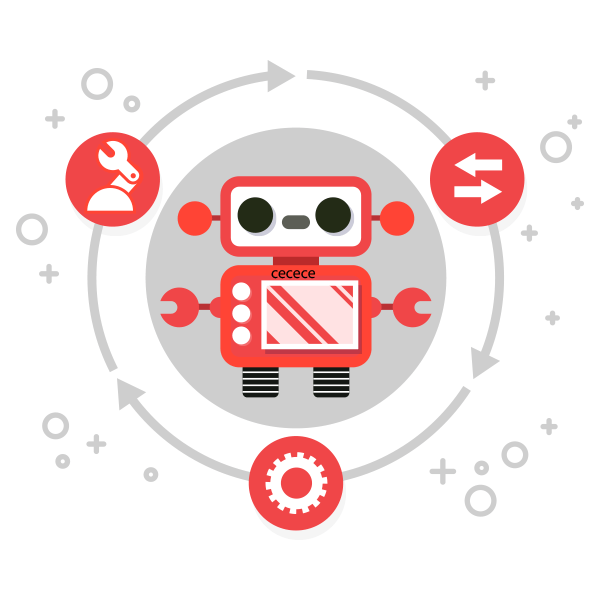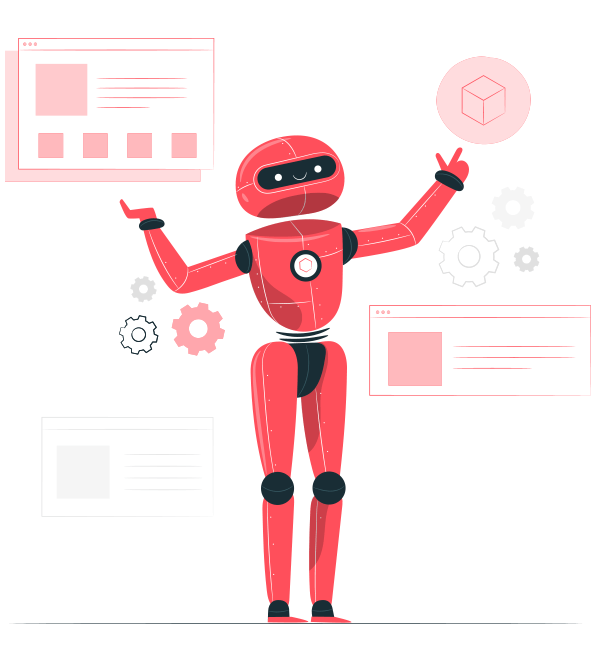
Robotic Process Automation
Robotic process automation (RPA) is a software approach for creating, deploying, and managing software robots that imitate human actions while working with digital systems and software. Software robots, like people, can interpret what’s on a screen, type the correct keystrokes, navigate systems, detect and retrieve data, and do a variety of predefined activities Software robots, on the other hand, can do it faster and more consistently than humans, without having to stand up and stretch or take a break for coffee.
How do Businesses benefit from RPA
Robotic Process Automation (RPA) is non-intrusive and may be swiftly used to accelerate digital transformation. It’s also useful for automating activities with old systems that don’t have APIs, VDIs, or database access. Below are some benefits of RPA:-

Accelerated transformation

Significant cost savings

Higher resiliency

Higher accuracy

Improved compliance

Boosted productivity

Happier employees

Customer Wise

Pointers to help identify
Robotic Process Automation opportunities
regions where they are executing the following tasks:

- Manually accessing and gathering data from a variety of programmes in order to perform their tasks.
- Manually migrating data from one system to another
- Manually validating data consistency across many systems
- Manually updating the same information across several systems
The above guidelines will assist you in narrowing down the prospective process candidates for automation. The next natural step in narrowing down your options is to think about:
- Whether the process can be clearly described.
- Whether the process is guided by business standards or if human judgment takes precedence
- Is the process's frequency significant enough to justify consideration for automation
Transition to RPA
Prepare the workforce for the upcoming changes
Support initiatives must be in place to awaken passion and encourage your workers toward success in their new responsibilities. Employees should feel free to ask questions and be encouraged to share ideas on how they might effectively collaborate with robotic workers to achieve common goals. Investing in your staff reaffirms their importance to the company and the business process.
Reorganize the remaining responsibilities such that people can manage them
RPA, whether used alone or in conjunction with BPM, will not be able to take over all human roles in the workplace. Employees will have more time (and possibly greater passion) for initiatives that demand creativity, sensitivity, and critical thinking without the burden of monotonous jobs. Take the time to identify new human roles in your business process, and be ready to stress the importance of these new positions
Emphasize the larger picture
RPA should be offered as a work supplier when introducing the concept of robotic automation to your staff. In order to achieve the shared aim, all suppliers have a part to play and a duty to do.
Determine the role of RPA
Before you can evaluate the effects of RPA on your staff, you must first determine the function of robotic automation in your whole business process. You may assess the evolving position of human employees inside your business process once you've established the explicit goal of RPA and identified which jobs robotic process automation will conquer.
Looking for
End-to-end RPA solutions?
Industries We Serve
- Food & Beverages
- Retail Businesses
- Real Estate
- Insurance
- Financial Services
- Hospitality
- Travel & Tourism
- Online Gaming
- Fitness & Nutrition

